Fix: Error Code ‘INET_E_DOWNLOAD_FAILIURE’ in Edge and IE 11
Some Internet Explorer 11 and Microsoft Edge users are reporting that they end up seeing the INET_E_DOWNLOAD_FAILIURE error whenever they try to visit a webpage. In most cases, affected users are saying that this problem happens with every URL, including big domains like google.com, amazon.com, etc.
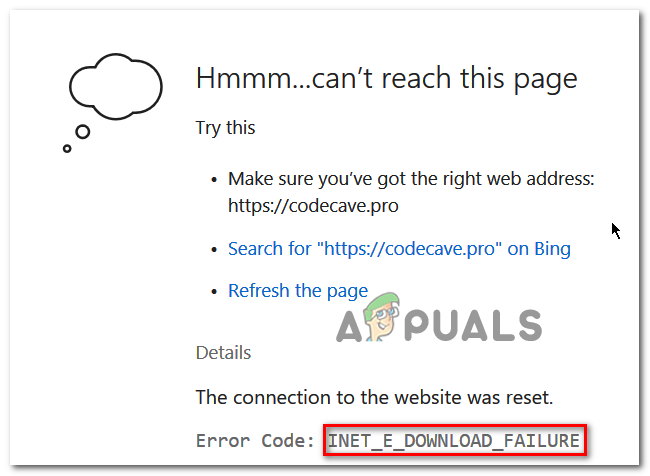
As it turns out, several different causes might end up causing this problem:
- Browser is configured to save encrypted pages – As it turns out, one of the most common causes that will end up spawning this error is an advanced Internet setting that allows IE and Edge to save encrypted pages. If this scenario is applicable, you should be able to fix the problem by accessing your Internet Properties and disabling this feature.
- Network isolation is enabled – In case you’re only experiencing this issue with Edge, you’re likely dealing with a network isolation issue. In this case, you should be able to fix the issue by enabling loopback and debugging the localhost server (if applicable).
- Corrupted IE cache – If you’re using Internet Explorer 11, you might be dealing with this browser’s notorious inability to clean it’s cache properly. Whenever the IE 11 cache ends up causing web server accessibility issues, you should try resetting Internet Explorer to a clean state and see if this ends up fixing the issue.
- Corrupted Microsoft Edge Files – Microsoft Edge can also be exhibiting this behavior due to a problem with how it calls the State Repository Service. A glitch with this service can end up preventing Edge from establishing connections with certain TLDs. In this case, repairing or resetting Microsoft Edge should end up fixing the issue.
- System File Corruption – Since the two browsers are built into Windows 10, this problem can also be a signal that you’re dealing with some type of system file corruption. In this case, you should reset every Windows component and see if this ends up fixing the issue.
Restoring the Internet Properties to the default
As it turns out, the most common causes that will eventually spawn the INET_E_DOWNLOAD_FAILIURE error is some type of network interruption that ends up stopping the exchange of data between the web server and your end-user machine.
And as the majority of affected users have confirmed, this problem is most likely facilitated by an advanced Internet setting that ends up interfering with IE 11 or Edge.
If this scenario is applicable, you should start this troubleshooting guide by resetting every advanced Internet setting – this will essentially return Internet Explorer or Microsoft Edge to the factory settings.
Note: If you’re looking for a most focused approach, jump directly to the next fix below.
If you want to go for this potential fix, start to follow the instructions below:
- Open up a Run dialog box by pressing Windows key + R. Next, type ‘inetcpl.cpl’ inside the text box and press Enter to open up the Internet Properties screen.
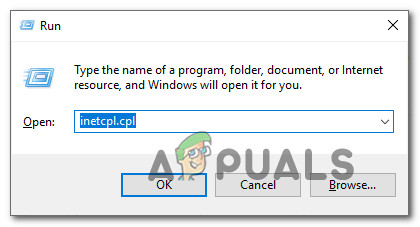
Opening the Internet Properties screen Note: In case you see the UAC (User Account Control), click Yes to grant admin access.
- Once you’re inside the Internet Properties screen, select the Advanced tab from the vertical menu at the top.
- Inside the Advanced options menu, click on Restore advanced settings and confirm when asked to do so.
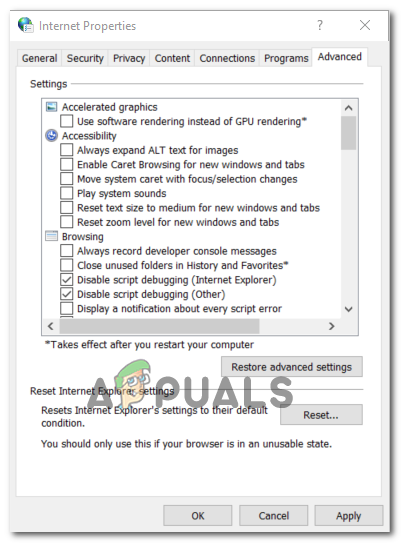
Restoring the advanced settings - Click Apply to save the changes, then reboot your computer and wait for the next startup sequence to complete.
- Repeat the action that was previously causing the problem and see if the issue is now resolved.
In case the same problem is still occurring or this method did not apply to your particular scenario, move down to the next potential fix below.
Preventing the browser from saving encrypted pages
As it turns out, one of the most common advanced Internet settings that will cause this problem is an option that prevents Internet Explorer or Microsoft Edge to save encrypted pages to disk. This is a useful feature to have enabled, but in practice, a lot of users are reporting a glitch that ultimately ends triggering the INET_E_DOWNLOAD_FAILIURE.
You can fix this issue (without resetting your entire suite of advanced Internet settings) by preventing IE 11 or Microsoft Edge to avoid saving encrypted pages to disk.
If you want to attempt this fix, follow the instructions below:
- Press Windows key + R to open up a Run dialog box. inside the text box, type ‘inetcpl.cpl’, and press Enter to open up the Internet Properties screen.
- Inside the Internet Properties screen, select the Advanced tab from the menu at the top, then move to the Settings menu.
- In the Settings menu, scroll down through the list of settings and check the box associated with Do not save encrypted pages to disk (under Security).
- Save the changes you just did by clicking on Apply.
- Restart your computer and wait for your computer to boot back up.
- Repeat the action that was previously causing the INET_E_DOWNLOAD_FAILIURE and see if the problem is now fixed.
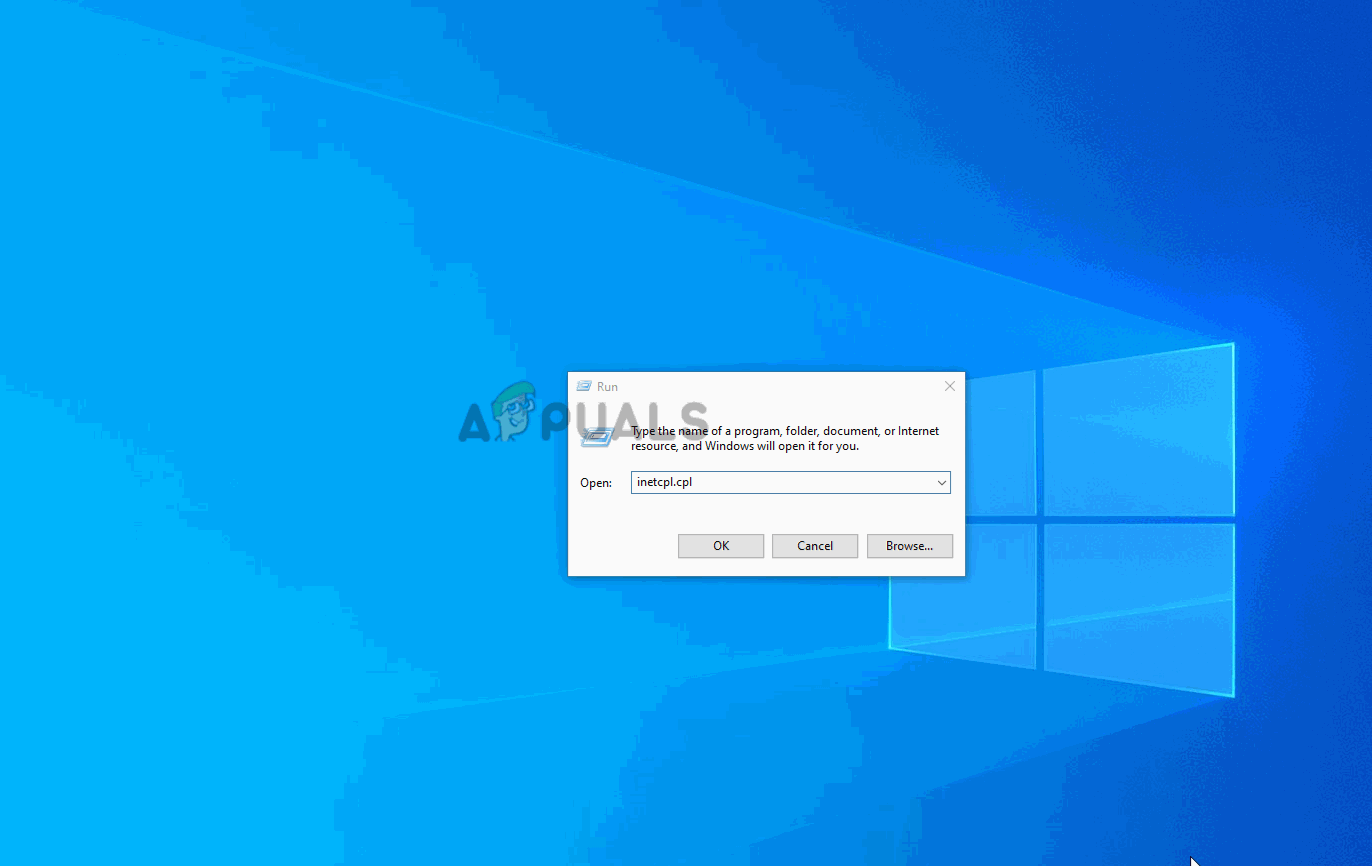
In case you’re still stuck with the same error code when accessing certain URLs, move down to the next potential fix below.
Enable Loopback in Microsoft Edge (if applicable)
If you’re encountering this issue with Microsoft Edge, chances are you’re dealing with a network isolation issue. In most cases, this issue occurs because network isolation is enabled by default (different from IE).
If this scenario is applicable, you should be able to fix the issue by enabling loopback and debugging the localhost server via a series of commands from an elevated CMD prompt.
To do this, follow the instructions below:
- Press Windows key + R to open up a Run dialog box. Next, type ‘cmd’ inside the text box and press Ctrl + Shift + Enter to open up an elevated CMD prompt. When prompted by the User Account Control (UAC), click Yes to grant administrative privileges.
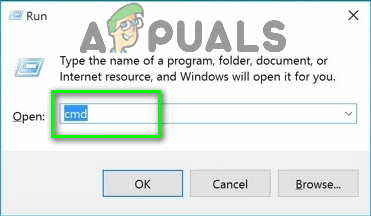
Type “cmd” into the Run dialog - Once you’re inside the elevated CMD prompt, type the following command and press Enter:
CheckNetIsolation LoopbackExempt -a -n="Microsoft.MicrosoftEdge_8wekyb3d8bbwe"
Note: For previous Window versions, use this command instead:
CheckNetIsolation LoopbackExempt -a -n=Microsoft.Windows.Spartan_cw5n1h2txyewy
- Now that you added the loopback exemption, reboot your computer and see if the problem is still occurring once the next startup is complete.
In case you still end up seeing the INET_E_DOWNLOAD_FAILIURE error when trying to visit certain websites, move down to the next potential fix below.
Restoring IE to a clean state (if applicable)
In case you’re encountering this problem with a version of Internet Explorer, it might be time to reset it to a clean state. This browser’s inability to clean itself effectively is one of the main reasons why it hasn’t been adopted by a wider audience.
If this scenario is applicable and you insist on using IE, you will need to uninstall and reinstall the browser to resolve the INET_E_DOWNLOAD_FAILIURE.
But keep in mind that since Internet Explorer is part of Windows, you will not be able to uninstall and reinstall conventionally – You will need to disable this built-in component from Windows features, restart your computer and enable it again to restore IE to a clean state.
If you are prepared to go this route, follow the instructions below:
- Press Windows key + R to open up a Run dialog box. Next, type ‘appwiz.cpl’ inside the text box and hit Enter to open up the Programs and Features menu.

Type appwiz.cpl and Press Enter to Open Installed Programs List - Once you’re inside the Programs and Features screen, click on Turn Windows features on or off from the vertical menu on the left.

In Programs and Features, click on Turn Windows Features On or Off - From inside the Windows Features menu, scroll down through the list of Windows Feature and uncheck the box associated with Internet Explorer 1 before clicking Ok.
- When you see the confirmation window, click Yes to disable Internet Explorer.
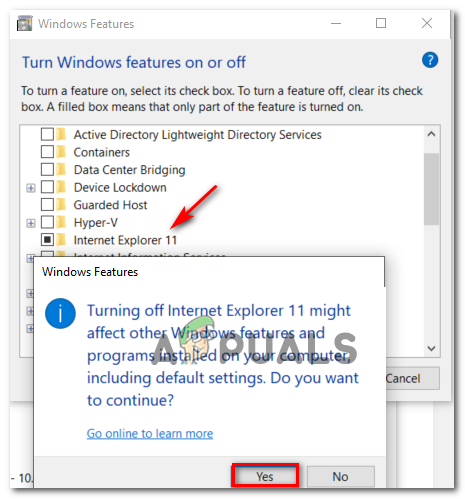
Disabling the Internet Explorer Component - Once Internet Explorer is effectively disabled, restart your machine and wait for the next startup to complete.
- After the next startup is complete, follow steps 1 and 2 again to return to the Windows Features screen. But this time, re-enable the box associated with Internet Explorer 11.
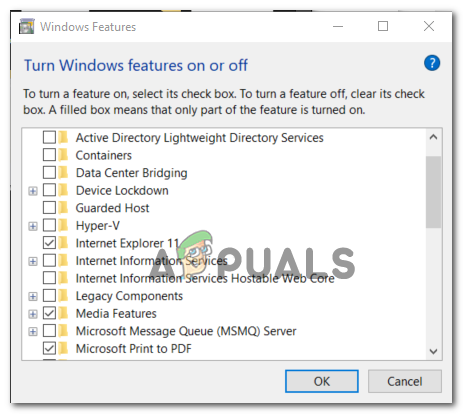
Enabling Internet Explorer 11 - Once you get this far, Internet Explorer 11 has been reverted to a clean state. Test if this operation has been succesfull by opening IE 11 and accessing the same website that was previously triggering the INET_E_DOWNLOAD_FAILIURE.
In case the problem is persisting, move down to the next potential fix below.
Repairing or Reset Microsoft Edge (if applicable)
In case you’re encountering the issue with Microsoft Edge, you’re likely dealing with a case of abusing the State Repository service. In severe cases, this problem might end up inhibiting Edge’s ability to establish connections with certain web servers.
If this scenario is applicable, you should attempt to repair your Edge browser and if this doesn’t resolve the issue, reset it to remove any temporary files. These two methods have been confirmed to be effective by a lot of affected users.
Here’s a quick guide on repairing or resetting Microsoft Edge to fix the INET_E_DOWNLOAD_FAILIURE error:
- Open up a Run dialog box by pressing Windows key + R. Next, inside the text box, type ‘ms-settings:appsfeatures’ and press Enter to open up the Apps & Features menu of the Settings app.
- From the Apps & Features menu, move over to the right section of the screen and make use of the search section to search for Microsoft Edge.
- After you manage to find the entry associated with Microsoft Edge, click on the Advanced Options hyperlink.
- Inside the Advanced Options menu, scroll down to the Reset section and click on Repair.
- Confirm your choice, then wait for the operation to complete. Once the process is finished, restart your computer and see if the problem is fixed starting with the next system startup.
Note: If the problem is repeating, you can also try doing a reset using the Reset button instead.
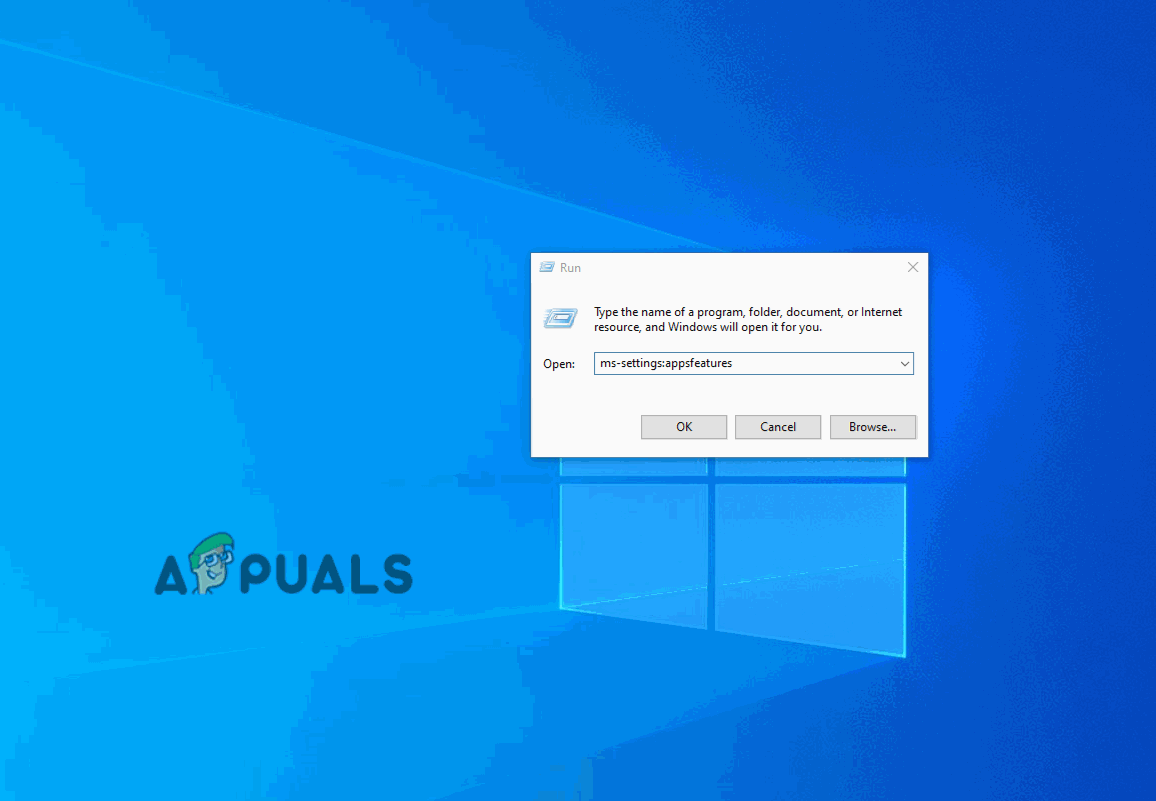
In case this fix didn’t apply to your current situation or the problem is still not resolved, move down to the next potential fix.
Performing a Repair install (in-place repair)
If none of the fixes above have worked for you, it’s pretty clear that the problem in your cases is facilitated by some type of system file corruption that cannot be resolved conventionally. In this case, the last result would be to reset every Windows component (including boot related data).
Keep in mind that this doesn’t necessarily mean that you will lose your personal data. Windows 8.1 and Windows 10 offers the option to repair install (in place repair), which would be the preferred approach in this case.
Performing a repair install will allow you to reset every Windows component while allowing you to keep your data present on your OS drive including documents, media, and even applications and games.
But keep in mind that you’ll likely need a compatible installation media to complete this operation (not required on Windows 10).
If you don’t care about data loss and you want to reset your computer as quick and as easy as possible, go for a clean install instead.





